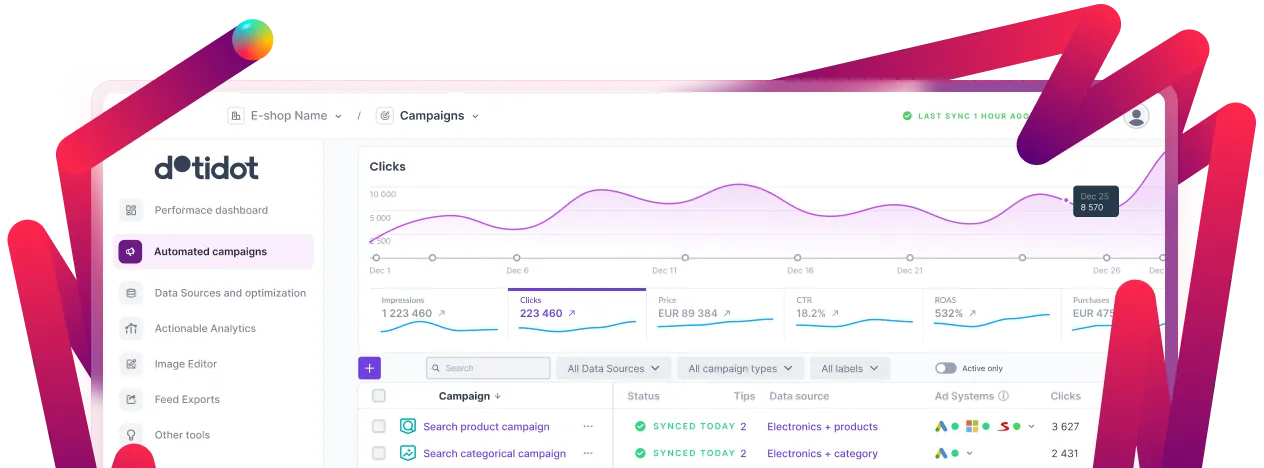Book a call with us







First we have to define two terms. What's the difference between machine learning and generative ai?
As mentioned above, it's a subset of artificial intelligence that enables computers to learn from and make decisions based on data. It involves the development of algorithms that allow systems to improve their performance on a task over time with experience, without being explicitly programmed for each specific task. Machine learning is used in various applications, such as recommendation systems, image and speech recognition, and predictive analytics.
It has many applications in marketing too. For example:
Generative AI is a type of artificial intelligence (AI) that can create new data, like text, images, or even music. It does this by learning the patterns and structures of existing data, and then using that knowledge to generate something new that is similar to, but not exactly like, what it has seen before.
Imagine a generative AI trained on a massive collection of cat pictures. It would learn what makes a cat a cat – the shape of its ears, the fur, the whiskers – and then be able to generate new images of cats, even though none of those specific cats would have ever existed before.
Here are some key aspects of generative AI:
There is one more term that relates to generative AI. Prompt engineering is the process of designing and refining the input (prompt) given to a generative AI model to achieve the desired output. Effective prompt engineering involves crafting clear, specific, and detailed prompts that guide the AI to produce relevant and high-quality results.
Example:
"Generate compelling social media copy for a Facebook ad targeting environmentally conscious millennials (aged 25-35). Promote a new eco-friendly clothing line featuring stylish designs made from sustainable materials like organic cotton and recycled fibers. Emphasize the importance of sustainable fashion and highlight the comfort and durability of the products. Encourage viewers to click through to the website to learn more about how they can support eco-conscious choices in their wardrobe."
This prompt specifies the target audience (environmentally conscious millennials aged 25-35), key selling points (sustainable materials, stylish designs, comfort, durability), and a clear call to action (visiting the website). It provides the generative AI model with detailed guidance to create persuasive and tailored marketing content suitable for the specified demographic.
AI analyzes vast data sets to identify trends and propose innovative campaign ideas, content formats, and visuals. This stimulates creative brainstorming and allows marketers to concentrate on strategic aspects rather than repetitive tasks.
AI-driven personalization scales marketing efforts by tailoring messages to individual preferences and interactions. Imagine creating customized website content, product recommendations, or ad copy that resonates deeply with each customer, enhancing engagement and satisfaction.
Generative AI can analyze vast amounts of data to uncover insights, trends, and patterns that inform marketing strategies and decision-making. Some tools already feature an option to upload your data sheets and let AI analyze it.
While it helps marketers a lot, this little marketing revolution comes with a few drawbacks. We should be aware of them too.
While AI can spark ideas, it currently struggles with genuine creativity. The content it generates often feels derivative, lacking the human touch and emotional resonance that can connect deeply with audiences.
I'll pause here for a moment. Generative models are advancing significantly. With each update, the content they generate increasingly resembles human-created work. However, this leads us to another consideration. Many marketers are beginning to rely entirely on AI-generated content. Over-reliance on generative AI for content creation may diminish human creativity and critical thinking skills

It can be difficult to understand how generative AI arrives at its outputs. This lack of transparency can make it challenging to assess the accuracy and reliability of the content it generates.
TIP: Google Gemini often controls the generated content and provides links to the source of information. You can use this to check whether the data is correct and has not been misunderstood by the AI.
Deepfakes and other forms of manipulated content raise ethical concerns. Malicious actors could misuse generative AI to spread misinformation or damage brand reputations. Not to mention how manipulated content destabilizes political situations in countries. Marketers need to tread carefully and ensure responsible use of the technology.
There have been instances where Adobe's terms of service led users to believe that their unpublished work could be used for AI training. Although Adobe has clarified its stance in a statement, this situation provides insight into how users might react to the misuse of their data.
Let's have a look at another ethical dilemma. Australian artists are raising alarm over the Lensa AI app, which they accuse of appropriating their artistic styles without consent. Developed to create stylized self-portraits using AI, Lensa draws from a vast database of images, including those of prominent artists like Kim Leutwyler. These artists believe that Lensa copying their painting techniques, color choices, and how they arrange things is a type of stealing ideas. This problem is made worse by laws that protect copyrights not being updated fast enough for AI technology. While the app's parent company defends its approach as a legitimate learning process, critics argue it raises significant ethical and legal questions about the ownership and originality of AI-generated artworks in the digital age.
ChatGPT, developed by OpenAI, is a leading generative-conversational AI model that can generate human-like text based on user prompts. It is widely used for customer support, content creation, and even as a personal assistant, providing informative and engaging conversations.
Gemini is a family of powerful AI models, similar to OpenAI's GPT-4. It can understand and generate different forms of information, like text, code, images, and even video. This makes it super versatile and able to handle a wide range of tasks, from answering your questions to creating images or even writing basic code. While it currently lacks the quality of some outputs, he often includes sources of the information used. Big thumbs up from us!
Jasper AI is a tool that helps marketers and writers create high-quality articles, blog posts, and marketing materials quickly. It understands context and generates relevant content, making it a valuable tool for content creators.
MidJourney is an AI tool that transforms simple prompts into photos, artworks and visual designs. It’s particularly popular among digital artists and designers for creating unique and visually stunning pieces.
Runway ML offers creative tools powered by AI that help users generate videos, images, and 3D models. It’s used in film production, game design, and other creative fields to make innovative projects easier.
DeepArt uses AI to change photos into artwork in the style of famous painters. It lets users apply artistic styles to their images, making them look like they were painted by well-known artists.
Creatify is a video creation tool that uses AI to turn text content into engaging videos. It’s popular among marketers and content creators for making professional-looking videos quickly for social media and other platforms.
We already know that Google has a strong relationship with machine learning, as it is part of many Google's products. However, finding the right approach to generative AI can be quite challenging.
On one hand, Google discourages low-quality AI-generated content by penalizing it in search results. This is a positive step for maintaining search quality. However, Google seems to be taking a nuanced approach by exploring formats like AI Overviews for Featured Snippets and AI-powered content generation for Google Ads. This suggests Google might be looking for ways to leverage generative AI responsibly, even within its core products.
Marketers should see generative AI as a useful tool that can greatly improve their work, but it's important not to fully trust the AI-generated content. While generative AI can create impressive results, it's not perfect. The content often needs to be reviewed and polished to match your brand's voice, message, and quality standards. Think of generative AI as a helpful colleague who gives you a good starting point, but whose work always benefits from your expertise.
A key part of working with generative AI is refining prompts to get the best results. The quality of AI-generated content can vary depending on how specific and clear the input prompts are. Marketers should try different prompts, adjusting them to guide the AI towards producing more relevant and high-quality content. This not only improves the output but also helps marketers understand the AI tool better.
Additionally, we should keep up with the latest developments in generative AI and continuously learn best practices. AI technology is advancing quickly, and staying informed about new features, tools, and techniques can give us an edge. Joining professional networks, attending webinars, and participating in online forums can be very helpful for sharing insights and learning from others in the field.
As you can see, even giants like Google are still seeking the right approach to generative AI. It's greatly changing the world of marketing, even more than pure machine learning AIs did. One thing is certain: generative AI is a valuable tool for marketers, but it should be seen as a partner rather than a standalone solution. By actively engaging with the AI, refining prompts, and polishing the output, marketers can fully utilize generative AI to produce high-quality, impactful content. This approach ensures that the human touch remains essential to the creative process.
